Sanele Matsolo’s innovative approach to his photographic practice illuminates the often shrouded world of traditional healing and spirituality in South Africa. We asked him some questions about the driving force behind his work, which offers a fresh perspective on ancestral work and challenges conventional narratives. Sanele Matsolo, the self-taught filmmaker and photographer, opened up about his spirited portrayals of African traditions, which while culturally rich and wildly popular, often remain in the shadows.
Matsolo’s choice of photography as his medium underscores the medium’s significant role in South Africa’s complex history. Despite colonial narratives and strict censorship laws, resistance photographers during apartheid documented the struggle against oppression. Their work countered oppressive ideologies, depicting Africans beyond primitive stereotypes. Photography served as a powerful political weapon and to some degree, it was photographers who exposed apartheid’s brutality, fostering international solidarity against it.
So it is only natural that so many young South African artists find affinity within this medium. Indeed for Matsolo, it was practically natural. “My journey into the world of art, design, and photography began as a child with a love for drawing and creating original cartoon characters, I was introduced to graphic design a few years after starting as a photographer. I used these skills to touch up my photography, but as clients’ requests became more radical, I began to completely transform my photos into works that would not feel out of place in an art museum.”
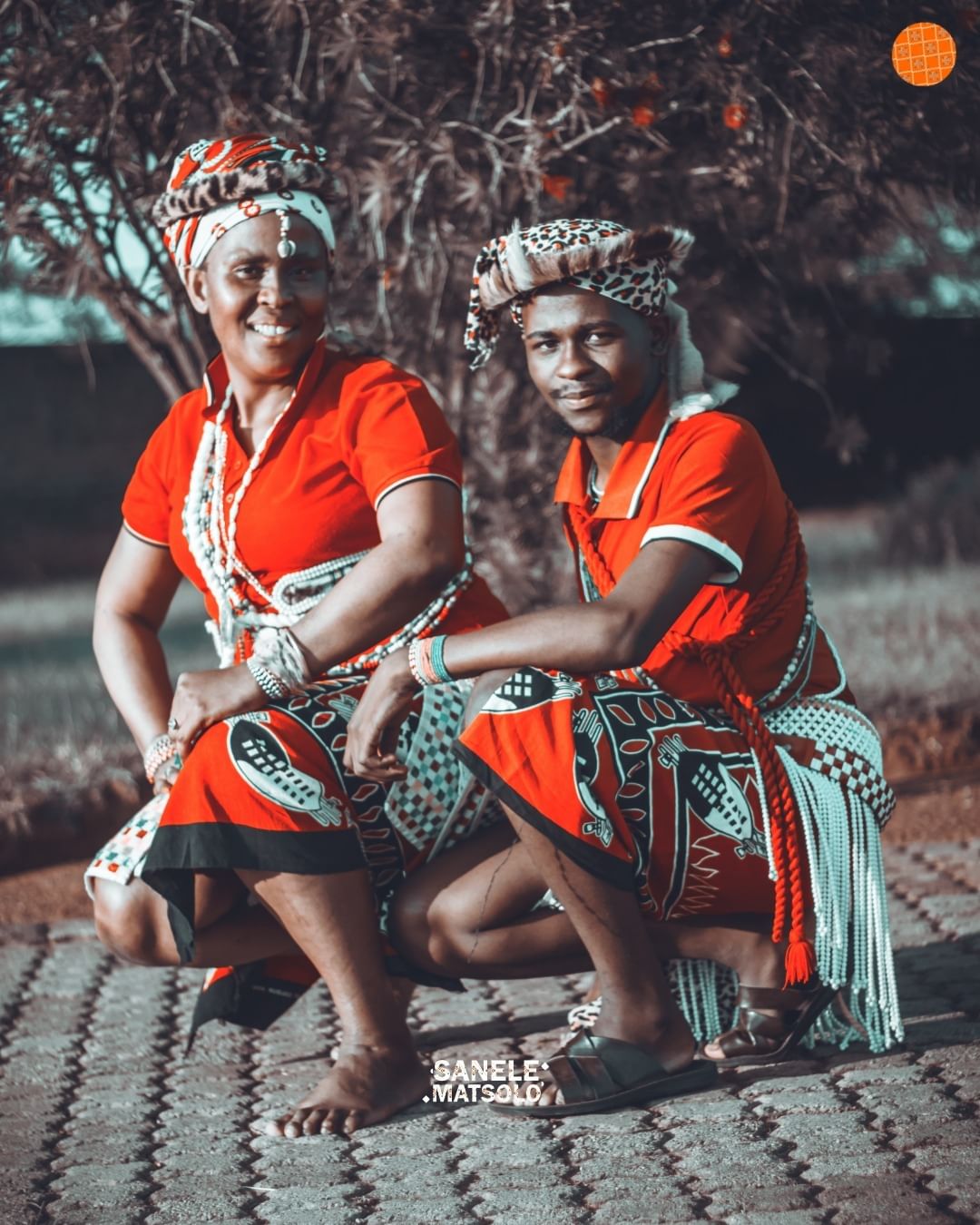
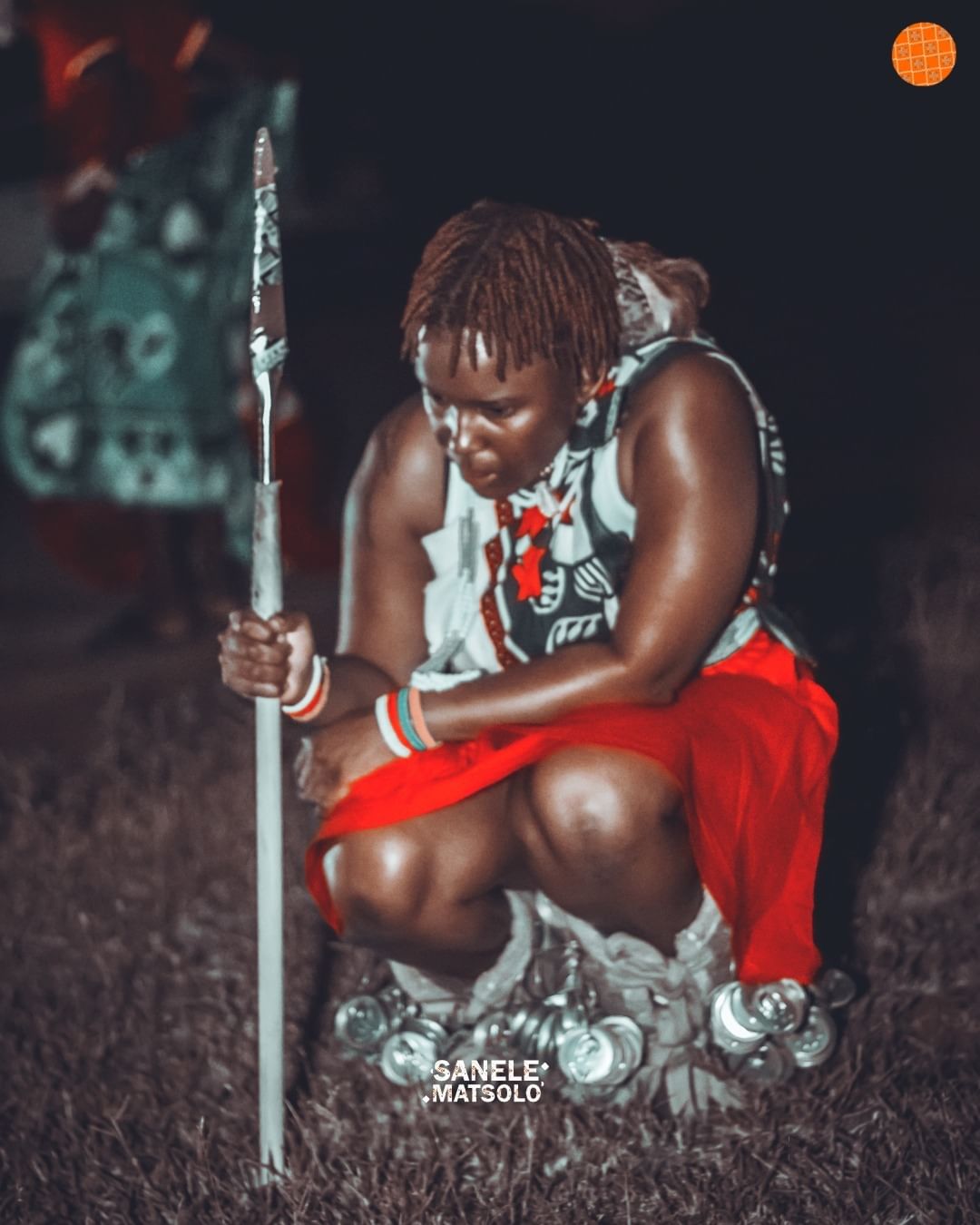
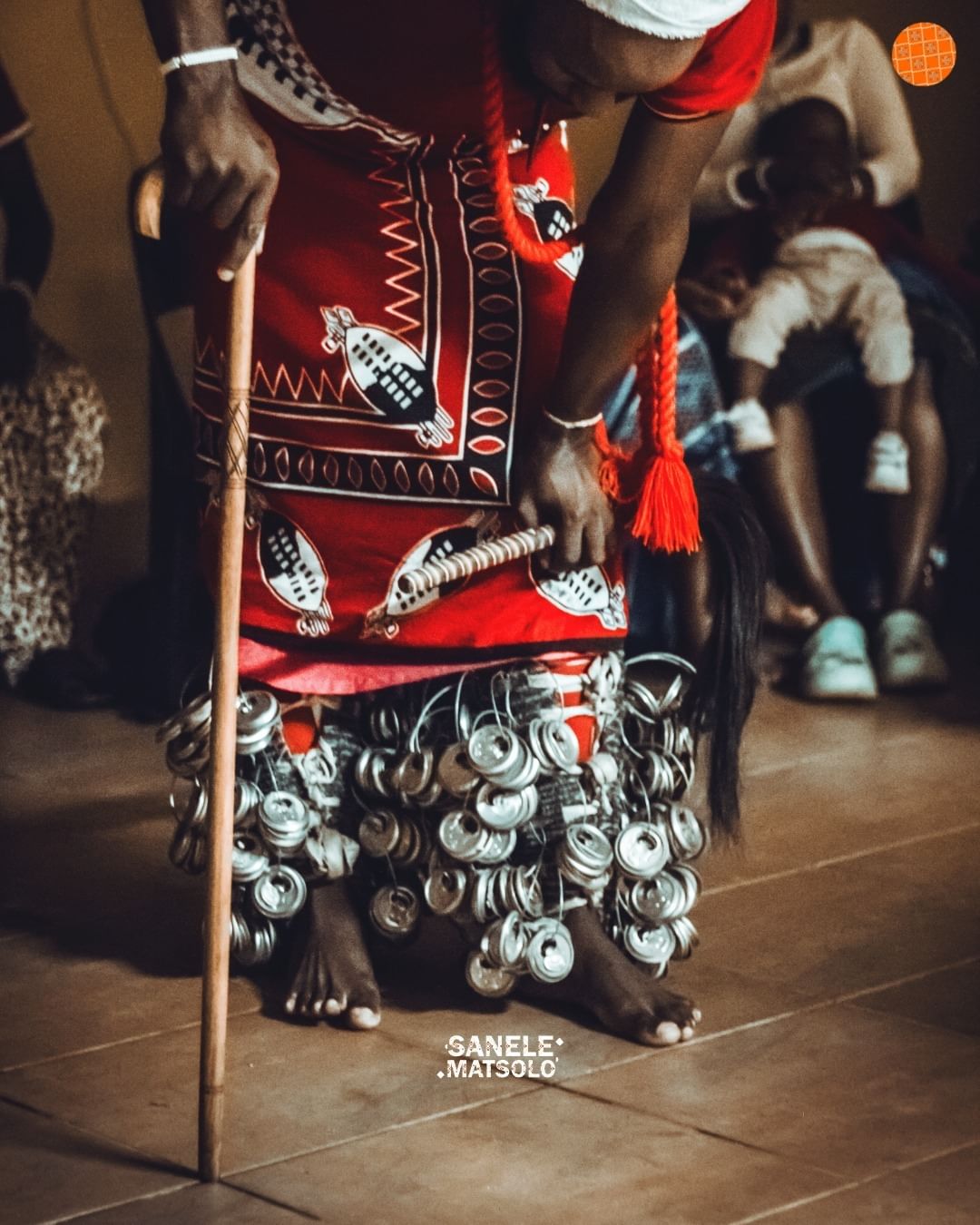
Born and raised in Chiawelo, Soweto in 1996, Matsolo showed an early talent for drawing and his inspiration deepened when he discovered the popular political cartoon series in South African newspapers like those by renowned artists like Zapiro during his fourth-grade years. Matsolo’s creativity led him to explore various artistic mediums, from drawing to painting and eventually performance. At Jabulani Technical High School, the artist got new opportunities, including showcasing his work at the Soweto Theater’s arts and crafts events.
Often depicting izangoma or amakholwa in rituals or various states of spiritual engagement, Matsolo’s images are both banal and sensational, capturing the magic of the everyday. Succinctly explaining the themes of his work, Matsolo said, “My work is a blend of tradition and modernity, with a collection of African elements as a centrepiece and surreal elements to create something unique I build on what I see in my day-to-day life in an African community. … I am deeply committed to unearthing the soulfulness within the characters and narratives I encounter. I focus on telling authentic South African stories that are relatable and familiar.”
Generally, Matsolo’s artistic repertoire encompasses photography and illustration. “I love both photography and illustration,” the artist shared. “The technical aspect of understanding various camera lenses and mastering the use of the camera pushes me to engage with photography fully. Illustration, on the other hand, is a different, new, and exciting world to me which I am currently exploring, I learn a lot every day mostly by looking at how other illustrators approach this kind of medium.” This transdisciplinary approach allows him to produce powerful images that convey both etherality and narrative depth.
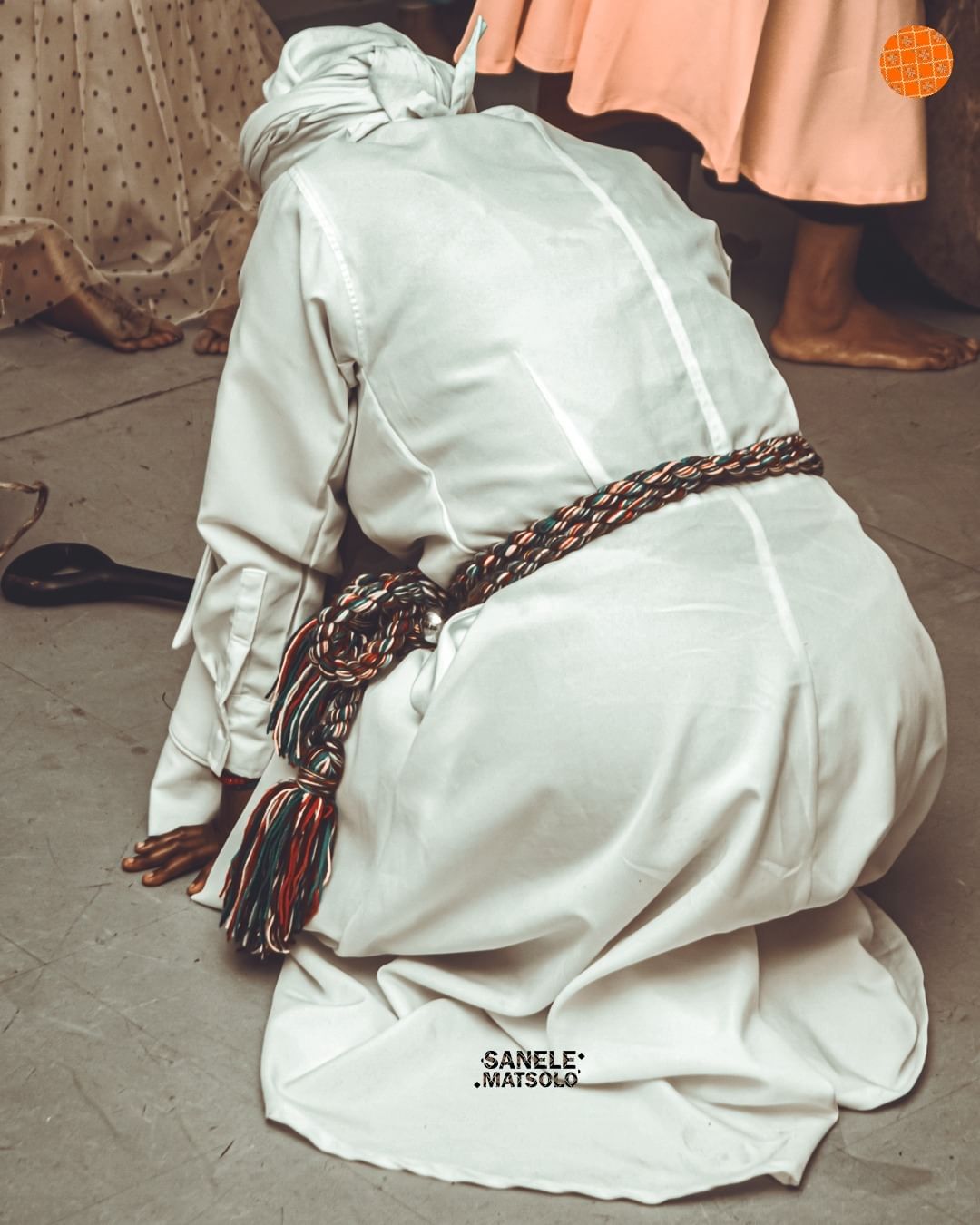
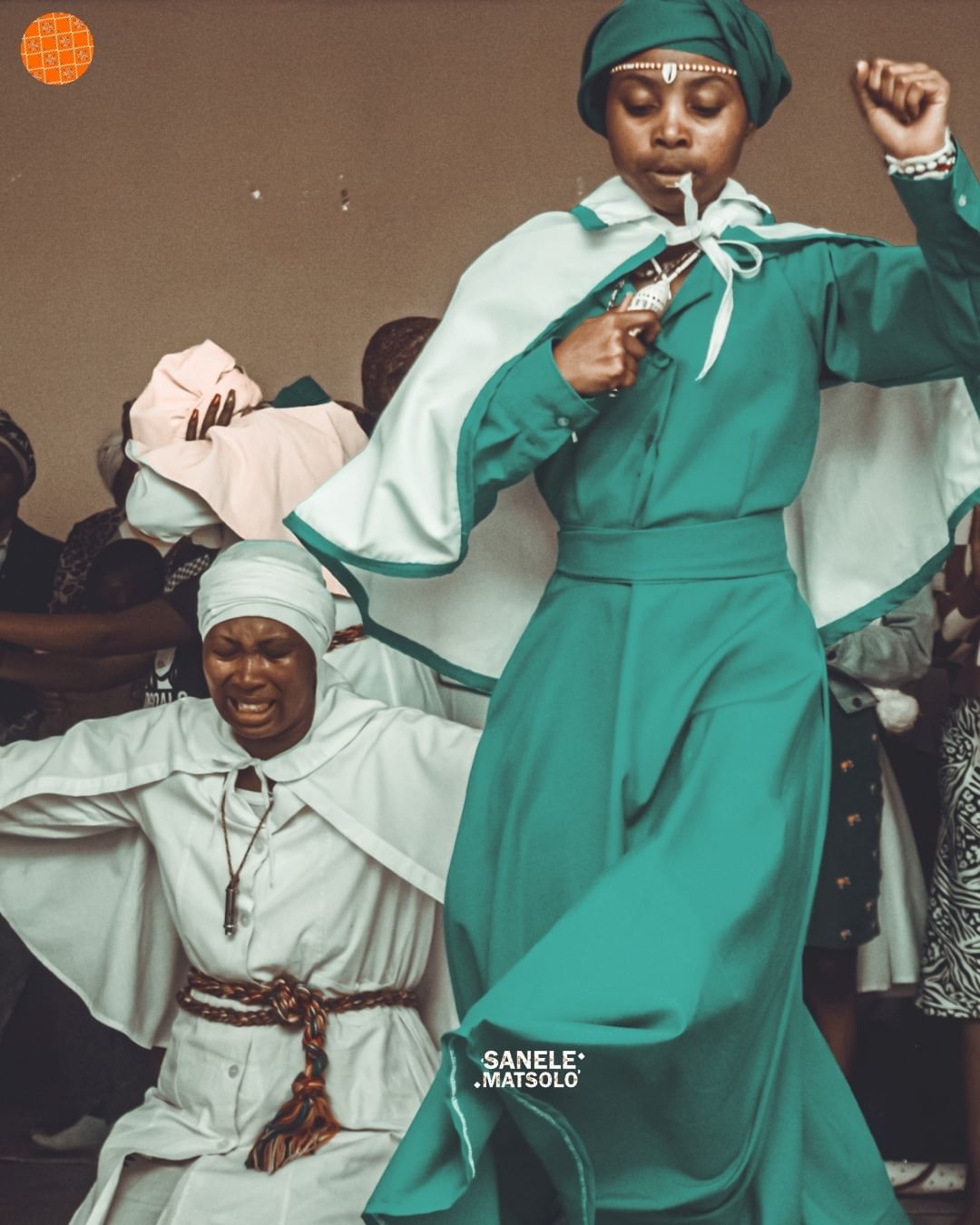
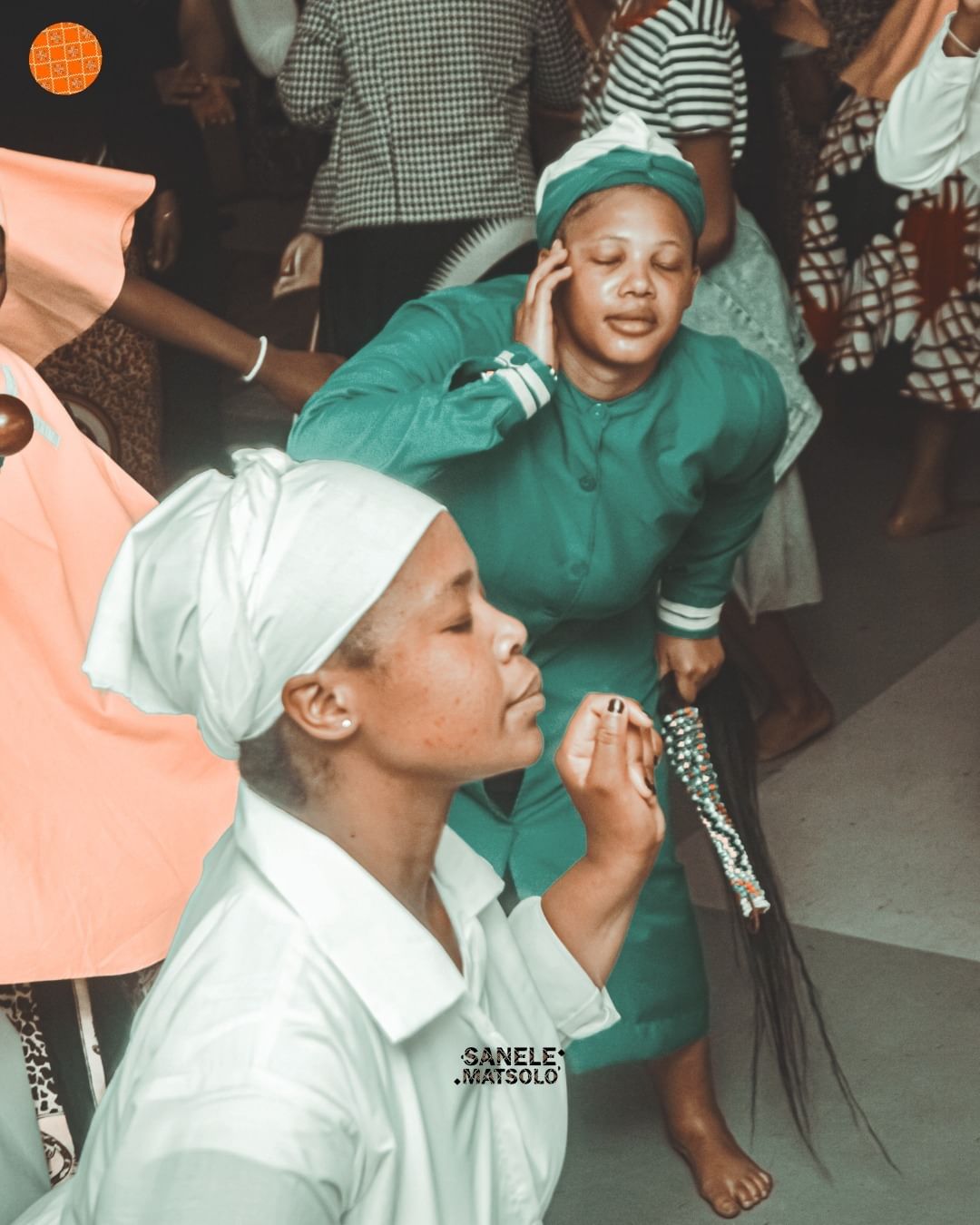
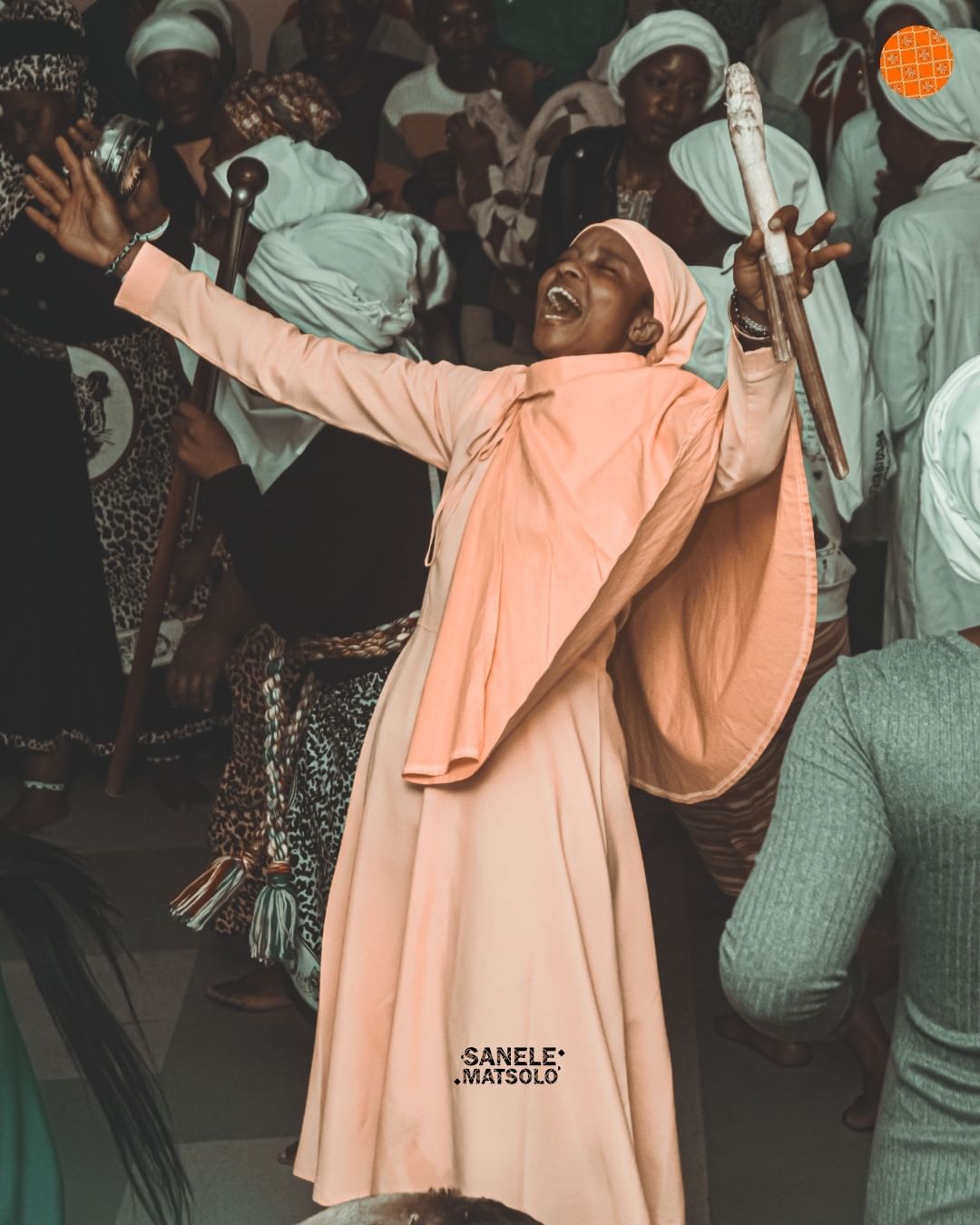
“As a self-taught artist, I started in branding and advertising, working as a graphic designer and art director I discovered a talent in Engineering Graphics and Design (EGD) and taught myself that technique, designing vectors and illustrations. In 2018, I established my digital agency, Alpha Digitals, where I create logos, posters, and branding for local individuals and businesses then it grew from there and I decided to do more in a creative way to fill some gaps in the art industry,” explained the artist.
Matsolo’s art blends stillness and motion, reflecting African time while embracing a futuristic aesthetic. He intertwines South Africa’s history of photography with trendy graphics evoking healing and decoloniality. “My works evoke nostalgia, creating a sense of familiarity and newness simultaneously,” Matsolo explained. It is this sense of transcendent time that surely resonates with the artist’s ever-growing audience who must be drawn by his ability to redefine how we depict and therefore exist in our own ancestral existences.
Sanele Matsolo’s work challenges conventional notions of South African contemporary culture and fosters new dialogues on identity and heritage. By infusing his art with a sense of youthful soulfulness, he creates a bridge between the past and the present, inviting viewers to connect with their own cultural lineage. Through his lens, he subverts the camera and its ethnographic underpinnings, repurposing it as a mbongi, reflecting the essence of that old communal spirit, operating anew. His slick blend of old tradition and contemporary graphic elements makes this artist one to watch.
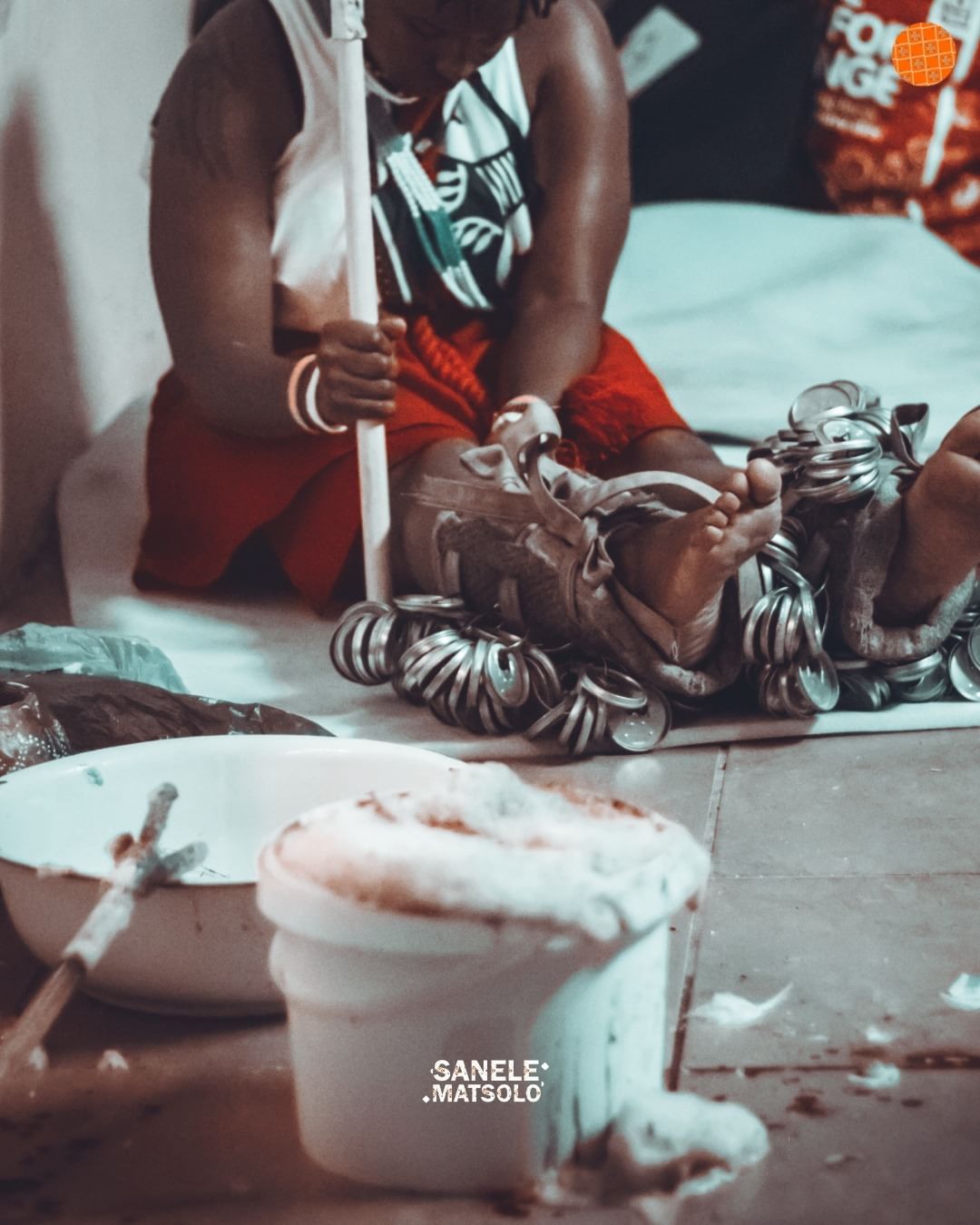
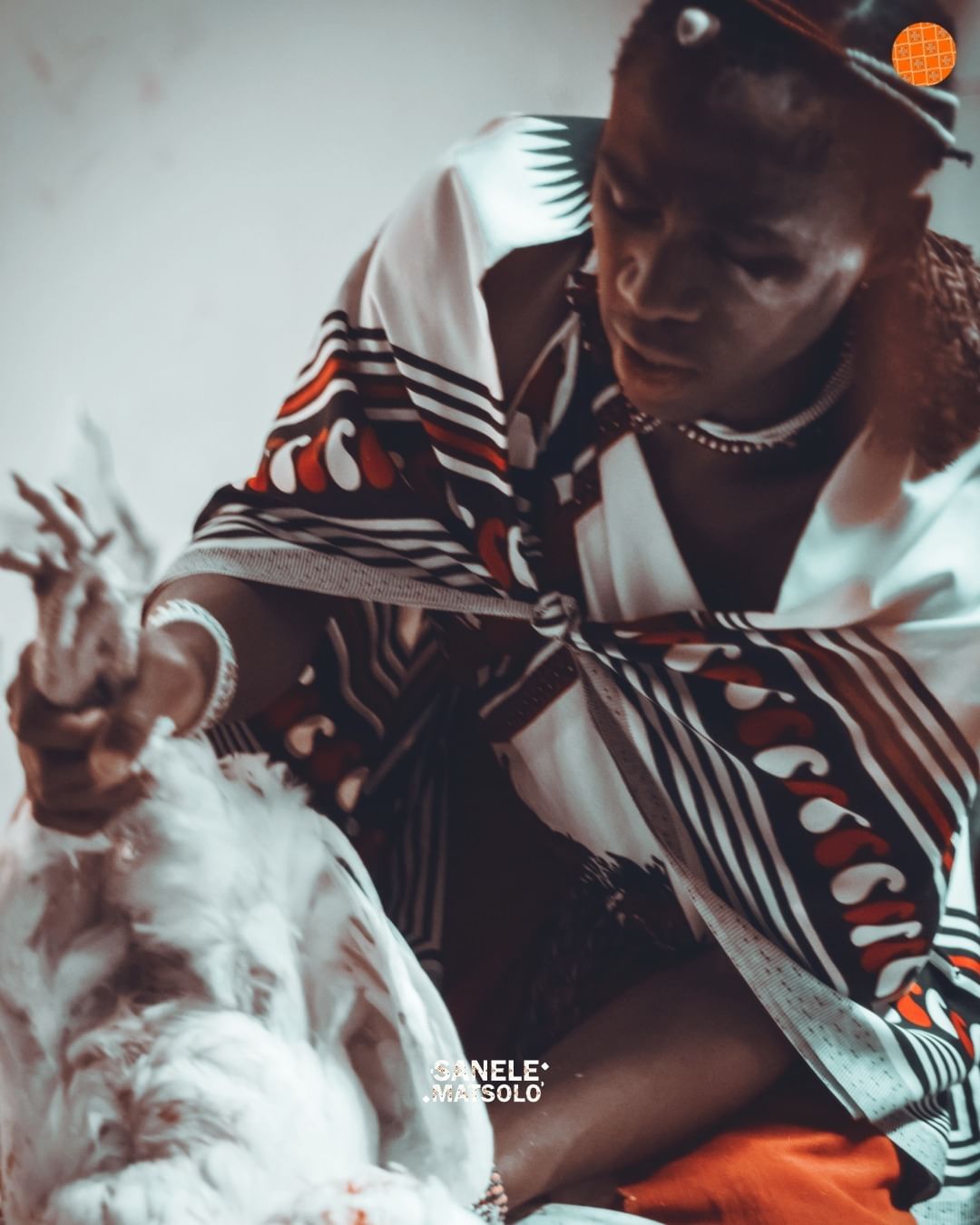
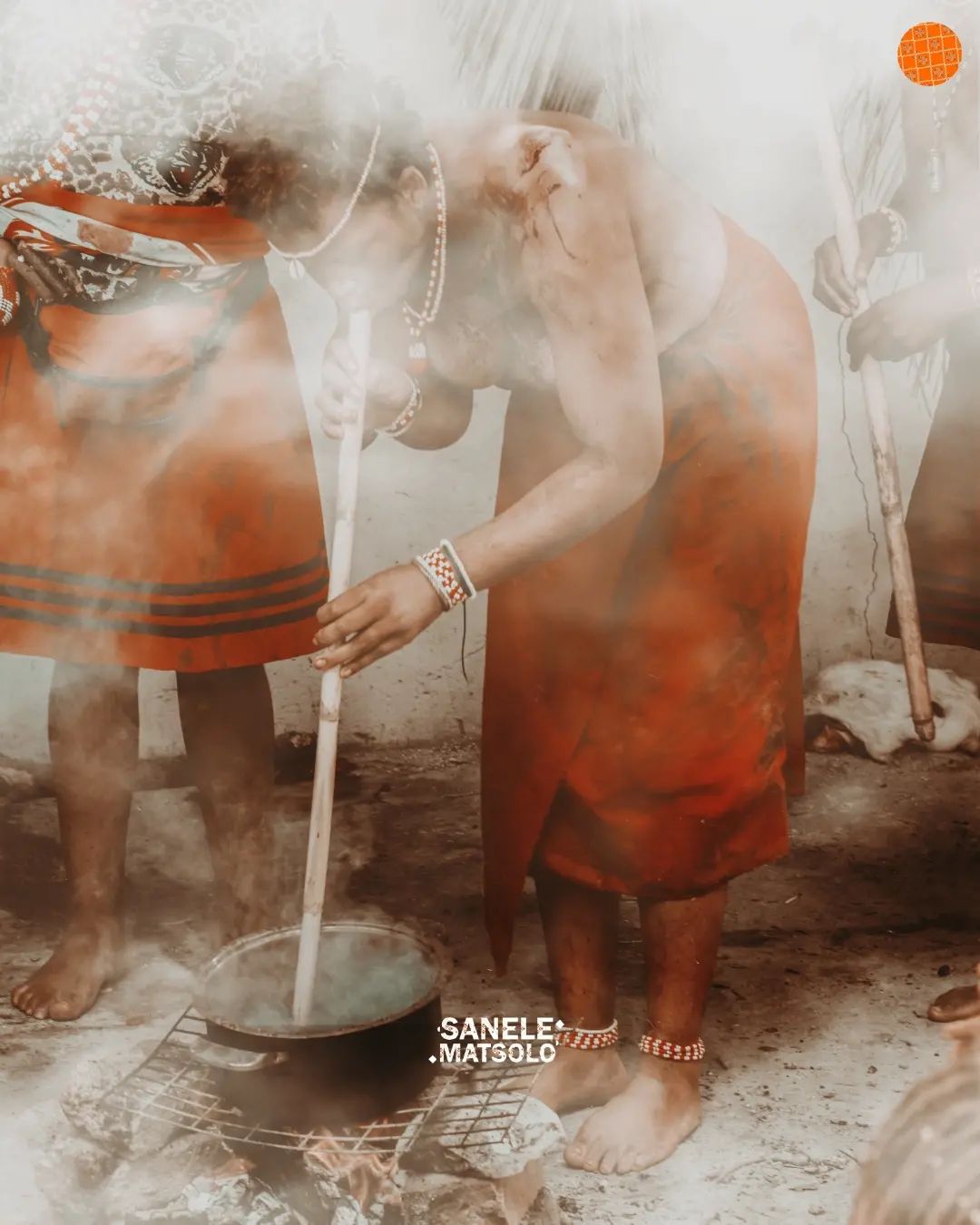
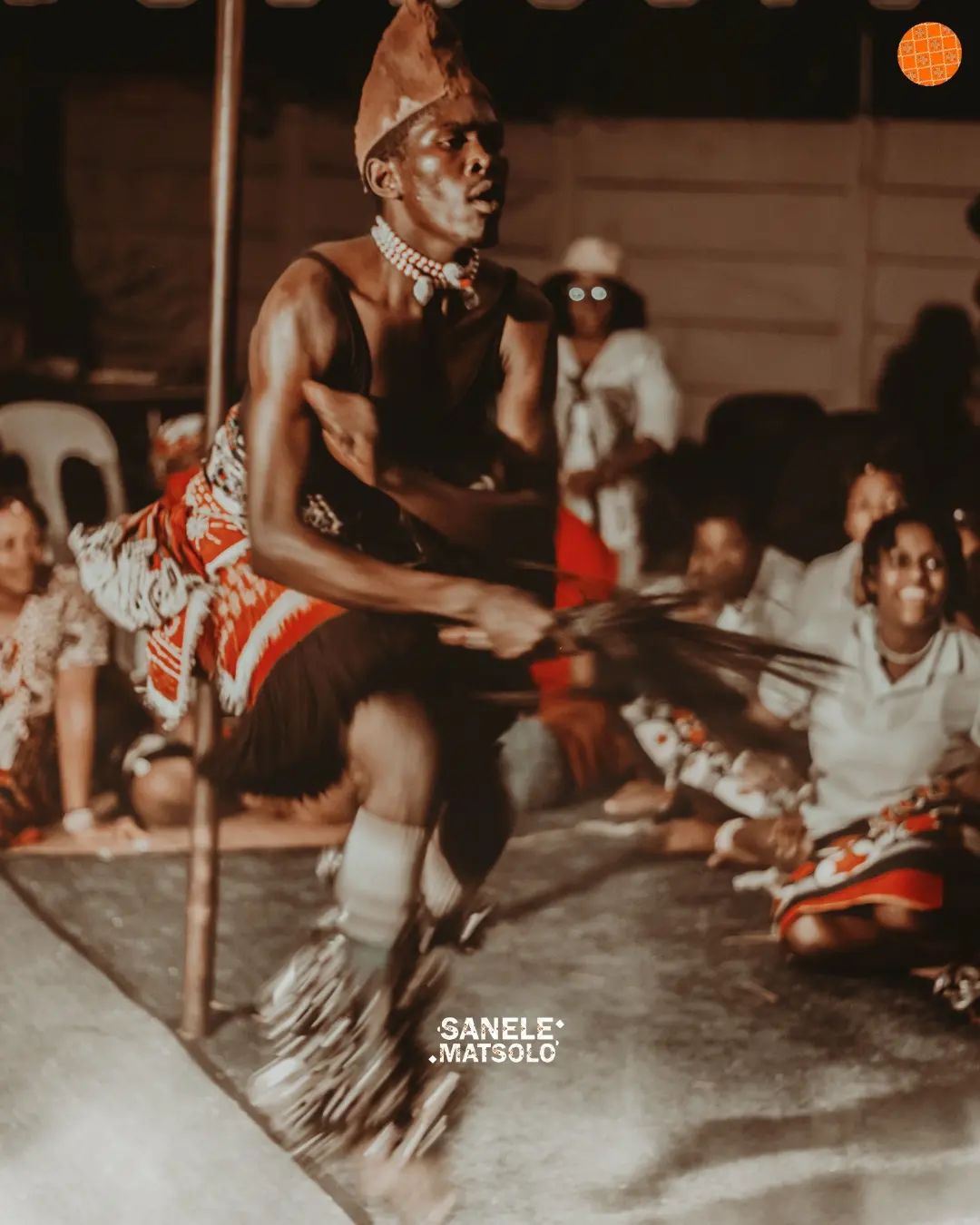
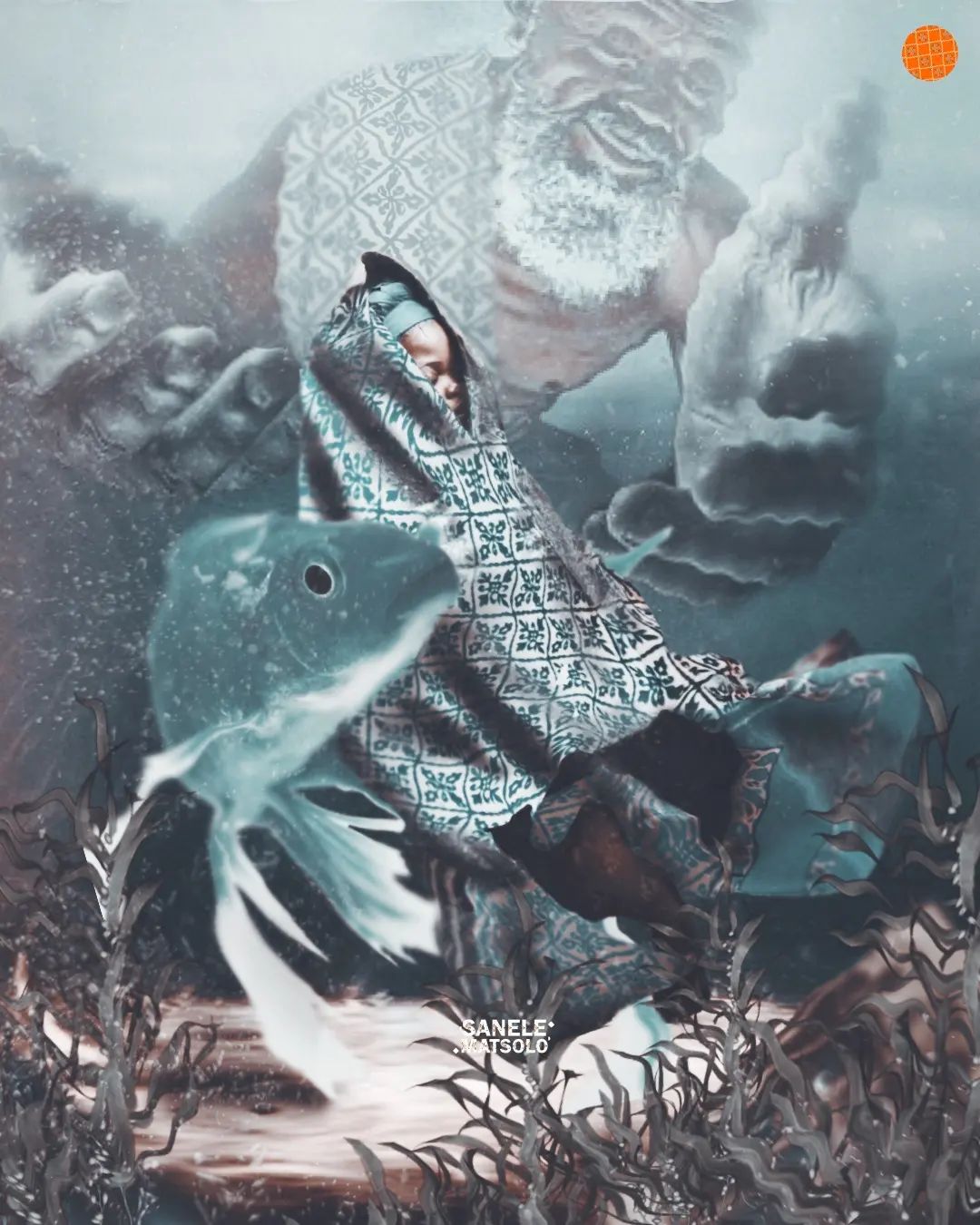



Born and raised in Chiawelo, Soweto in 1996, Matsolo showed an early talent for drawing and his inspiration deepened when he discovered the popular political cartoon series in South African newspapers like those by renowned artists like Zapiro during his fourth-grade years. Matsolo’s creativity led him to explore various artistic mediums, from drawing to painting and eventually performance. At Jabulani Technical High School, the artist got new opportunities, including showcasing his work at the Soweto Theater’s arts and crafts events.
Often depicting izangoma or amakholwa in rituals or various states of spiritual engagement, Matsolo’s images are both banal and sensational, capturing the magic of the everyday. Succinctly explaining the themes of his work, Matsolo said, “My work is a blend of tradition and modernity, with a collection of African elements as a centrepiece and surreal elements to create something unique I build on what I see in my day-to-day life in an African community. … I am deeply committed to unearthing the soulfulness within the characters and narratives I encounter. I focus on telling authentic South African stories that are relatable and familiar.”
Generally, Matsolo’s artistic repertoire encompasses photography and illustration. “I love both photography and illustration,” the artist shared. “The technical aspect of understanding various camera lenses and mastering the use of the camera pushes me to engage with photography fully. Illustration, on the other hand, is a different, new, and exciting world to me which I am currently exploring, I learn a lot every day mostly by looking at how other illustrators approach this kind of medium.” This transdisciplinary approach allows him to produce powerful images that convey both etherality and narrative depth.




“As a self-taught artist, I started in branding and advertising, working as a graphic designer and art director I discovered a talent in Engineering Graphics and Design (EGD) and taught myself that technique, designing vectors and illustrations. In 2018, I established my digital agency, Alpha Digitals, where I create logos, posters, and branding for local individuals and businesses then it grew from there and I decided to do more in a creative way to fill some gaps in the art industry,” explained the artist.
Matsolo’s art blends stillness and motion, reflecting African time while embracing a futuristic aesthetic. He intertwines South Africa’s history of photography with trendy graphics evoking healing and decoloniality. “My works evoke nostalgia, creating a sense of familiarity and newness simultaneously,” Matsolo explained. It is this sense of transcendent time that surely resonates with the artist’s ever-growing audience who must be drawn by his ability to redefine how we depict and therefore exist in our own ancestral existences.
Sanele Matsolo’s work challenges conventional notions of South African contemporary culture and fosters new dialogues on identity and heritage. By infusing his art with a sense of youthful soulfulness, he creates a bridge between the past and the present, inviting viewers to connect with their own cultural lineage. Through his lens, he subverts the camera and its colonial underpinnings, repurposing it as a mbongi, reflecting the essence of that old communal spirit. His slick blend of tradition with contemporary elements makes this artist one to watch.
























































